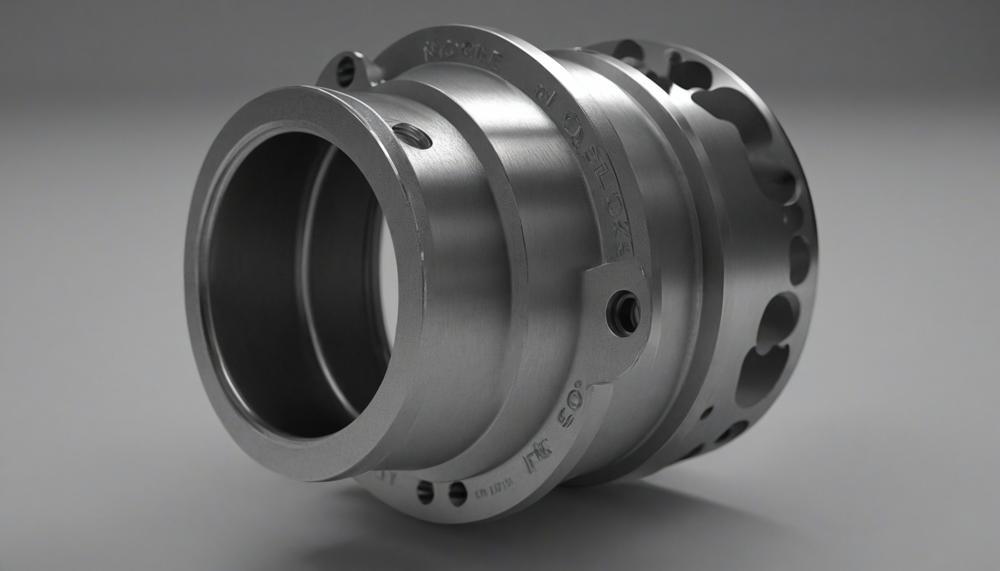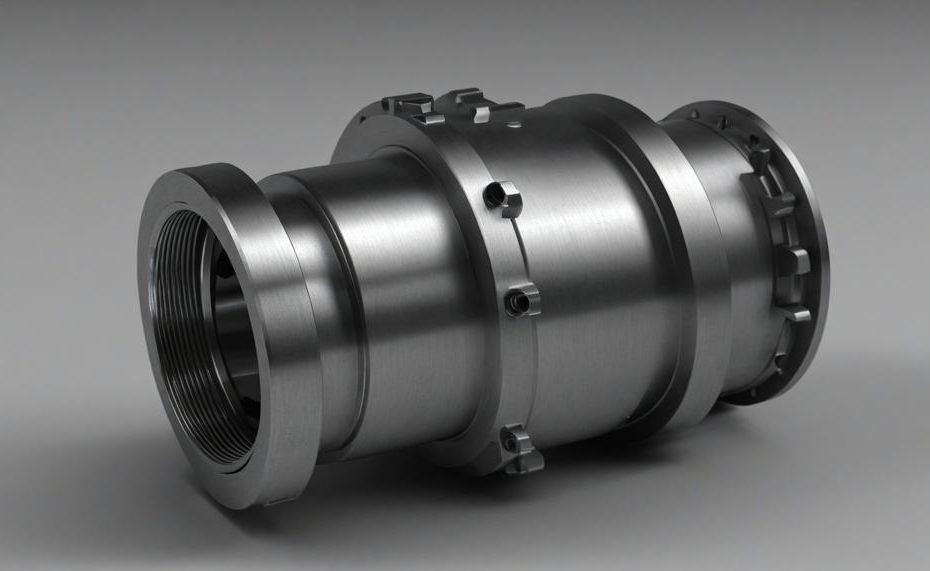Welcome to the fascinating world of welding techniques, where precision meets durability. Today, we’re diving into the realm of a highly specialized and critical joining method: the socket weld. This technique plays a pivotal role in creating strong, lasting bonds in piping systems, crucial for industries far and wide. From the energy sector to manufacturing plants, understanding how this method works and its advantages can be a game-changer.
In this blog post, we’ll peel back the layers of complexity surrounding this welding technique, providing you with a clear and engaging exploration. Here’s a snapshot of what we’ll cover:
- The basics: A straightforward explanation of how this welding method functions.
- Benefits: Why it’s often the go-to choice for certain applications.
- Application scenarios: Where and why it shines in the industrial world.
- Best practices: Tips to ensure optimal outcomes when using this technique.
Get ready to enhance your knowledge on a welding process that’s as intriguing as it is indispensable in many industries.
Contents
What is a Socket Weld?
A socket weld, mates, is a nifty way to join two pipes together. It’s like a puzzle piece where one pipe slips into a recessed area of another pipe or fitting. Imagine you’re crafting a model ship in a bottle, and every piece needs to fit snug and tight. That’s what a socket weld does for pipes. It’s a strong, reliable connection that’s perfect for handling the high pressures and temperatures you’d find in the wild world of industries like oil rigs, chemical plants, and power stations.
Why do folks use them, you ask? Well, for starters, they’re brilliant at keeping a tight seal, which is crucial when you’re dealing with hazardous liquids or gases that could throw a spanner in the works if they leaked. They’re also compact, which means you can fit them in tighter spaces without a hitch. Plus, they’re resistant to corrosion, so they can stand up to some pretty harsh environments without giving up the ghost.
Here’s a quick look at what makes socket welds tick:
| Feature | Benefit | Application |
| Compact Design | Space-saving, ideal for limited areas | Refineries, submarines |
| High Pressure Resistance | Handles extreme conditions without faltering | Steam lines, hydraulic systems |
| Corrosion Resistance | Long-lasting in harsh chemical environments | Chemical processing plants, desalination plants |
Remember, while they’re tough as old boots, socket welds need a bit of TLC with regular checks to avoid any trouble like cracking or incomplete penetration.
Working of Socket Welding
Socket welding is a prevalent method for joining pipes in various industries due to its robustness and efficiency. It’s particularly suited for small diameter pipes, offering a neat and effective solution for creating strong pipe joints. Here’s a step-by-step breakdown of how socket welding works, ideal for newcomers to the field:
- Preparation: First, ensure that the pipe and fitting are clean and free from any debris or contaminants. This cleanliness is crucial for a strong weld.
- Insertion: Next, insert the pipe into the fitting’s socket. The fit should be snug, akin to placing a pencil into a holder, allowing for precise alignment and a strong connection.
- Gap Creation: A critical step is to leave a small gap (typically 1/16 inch) between the pipe and the bottom of the socket to allow for thermal expansion. This gap helps prevent stresses and potential cracking.
- Welding: Apply a fillet weld at the joining point between the pipe and the fitting. This weld seals the gap, ensuring a leak-proof and durable connection.
- Inspection: After the weld cools, inspect it for any signs of imperfections or weaknesses. A successful weld should be smooth and uniform.
Types of Socket weld pipe fittings
In the realm of welding, socket weld pipe fittings stand out as vital components for creating strong, leak-proof connections in piping systems. These fittings are inserted into the recess of a valve, fitting, or flange and then welded in place, offering a robust and efficient method to connect pipes in a range of settings.
Let’s delve into the various types of socket weld pipe fittings and their applications in welding processes:
| Fitting Type | Description | Common Uses |
| Elbows | Elbows are bent to change the direction of the piping system. Available in 45° and 90° angles. | Used to redirect pipe routes in water supply, gas, and chemical industries. |
| Couplings | Couplings are used to connect two straight pipe sections. They come in full and half variants. | Widely used in both low and high-pressure pipelines for fluids and gases. |
| Tees | Tees are T-shaped fittings that split or combine the flow. Equal tees have all three ends the same size, while reducing tees have one end smaller. | Crucial in distributing or merging fluid flows in various industrial applications. |
| Unions | Unions consist of three parts: a nut, a female end, and a male end, allowing for easy disconnection without cutting. | Useful for piping systems that require frequent dismantling for inspection or maintenance. |
| Caps | Caps are used to seal the end of a pipe, providing a dead-end. They’re dome-shaped or flat. | Employed to close off pipelines, both temporarily during maintenance or permanently. |
| Reducers | Reducers are used to connect pipes of different diameters, available in concentric and eccentric types. | Essential in transitioning between pipes of varying sizes, ensuring smooth flow rates. |
| Bushings | Bushings are used to reduce the bore size from a larger to a smaller diameter, fitting inside the larger pipe. | Common in applications requiring the connection of mismatched pipe sizes. |
| Flanges | Flanges provide a method for bolting two sections of pipe together, with a socket weld connection to one pipe. | Integral in creating detachable joints in high-pressure and high-temperature systems. |
These socket weld pipe fittings are primarily used in the fabrication of piping systems that transport liquids, gases, and occasionally solids under various temperatures and pressures.
Their design ensures a high integrity seal, making them suitable for heavy-duty applications in industries like oil and gas, chemical processing, and power generation.
The choice of fitting depends on the specific requirements of the piping system, including the direction of flow, pressure levels, and the necessity for future disassembly.
Features of Socket Weld Fittings
Socket weld fittings boast a unique set of features that set them apart in the realm of industrial piping. Here’s a dive into their advantages over other types of fittings:
Advantages of Socket Weld Fittings

| Leak-Proof Design | These fittings ensure a secure, leak-proof connection, crucial for maintaining system integrity under high pressure and temperature. |
| Smooth Flow | They offer a smooth inner surface, reducing turbulence and minimizing the risk of erosion within the piping system. |
| Strength and Durability | Constructed to withstand extreme conditions, they are reliable for high-pressure applications, thanks to their robust design and the use of durable materials like Inconel sheets. |
| Space Efficiency | Their compact nature makes them ideal for tight spaces, providing a practical solution where larger fittings won’t fit. |
| Simplicity of Installation | They can be installed easily without specialized tools or machinery, making them a favourable choice for quick setups. |
| Cost-Effective Manufacturing | Available in a variety of materials, they can be produced at a lower cost, offering both versatility and affordability. |
| Corrosion Resistance | Made from materials that resist corrosion, socket weld fittings ensure longevity and reliability in harsh environments. |
While they shine in many applications, it’s wise to remember that socket weld fittings are typically suited for smaller-diameter pipes and require careful alignment during installation to avoid any misfits. Despite these considerations, their advantages make them a sterling choice for a plethora of industrial tasks, marrying efficiency with performance.
Advantages of Socket weld pipe fittings
Socket weld pipe fittings stand out in the industrial landscape for their robustness and efficiency, especially when pitted against their counterparts. Let’s delve into the nitty-gritty of why these fittings are often the go-to choice for professionals in various fields.
| Feature | Advantage | Comparison |
|---|---|---|
| Leak-proof Connection | Ensures a secure seal, capable of withstanding high pressures and temperatures. | Superior to threaded fittings, which can be prone to leaks under similar conditions. |
| Versatility | Applicable in diverse environments like water treatment, petrochemicals, and HVAC systems. | More adaptable than flanged fittings, which are bulkier and not suited for tight spaces. |
| Cost-efficiency | Lower production costs and wide availability in various sizes make them economically viable. | Better value than butt weld fittings that require more material and time-intensive welding. |
| Compact Design | Their small footprint requires less space, making them ideal for compact installations. | Contrasts with bulkier options like flanged connections, offering a space-saving alternative. |
| Simplicity in Installation | Easily welded without the need for extra tools or elaborate setups. | Less cumbersome than butt welds that demand precise beveling and alignment. |
| Corrosion Resistance | Able to resist corrosive substances, maintaining integrity over time. | More resilient compared to some metal fittings that may corrode or deteriorate under similar conditions. |
To sum it up, socket weld pipe fittings offer a concoction of benefits unmatched by others – from ensuring a leak-proof system capable of enduring extreme pressures to being a cost-effective solution with a flair for versatility.
Their compact design caters splendidly to tight spaces, while the ease of installation makes them a darling among technicians. Moreover, their resilience against corrosion seals their reputation as a durable choice, ready to face off against the rigours of various applications.
Drawbacks of Socket weld pipe fittings
The discussion around socket weld pipe fittings, while often highlighting their efficiency and robustness for various industrial applications, also uncovers several significant drawbacks. These drawbacks, it’s essential to note, can influence the overall welding process and the longevity and reliability of the pipe system.
- Precision in Installation: Socket weld fittings demand meticulous alignment during installation. The precision required can slow down the process, increasing labour time and cost. If alignment is off, it can lead to leaks or pressure drops.
- Specialized Training: The need for specialized training for workers installing these fittings adds an extra layer of complexity and cost. Without proper training, the risk of incorrect installation rises, potentially compromising the system’s integrity.
- Compatibility Issues: These fittings have limited compatibility with certain materials, which narrows their application scope. For projects involving diverse materials, this limitation can lead to the selection of more expensive or less efficient alternatives.
- Inspection Challenges: Once installed, socket weld fittings are difficult to inspect. This aspect can mask potential issues like micro-cracks or improper welds, leading to future failures without prior indication.
- Not Ideal for All Sizes and Pressures: Although socket weld fittings are suitable for a wide range of applications, they may not be the best choice for large-diameter pipes or extremely high-pressure settings. For such scenarios, alternatives might be needed, complicating the design and selection process.
- Cost Considerations: Despite being cost-effective in production, the overall cost, when considering precision, training, and potential compatibility issues, might rise, making them an expensive choice compared to other fittings for some projects.
Understanding these drawbacks is crucial for anyone considering using socket weld pipe fittings in their projects.
Socket weld vs Butt weld fittings
| Feature | Socket Weld Fittings | Butt Weld Fittings |
|---|---|---|
| Installation Method | Inserting the end of a pipe into a socket and welding around the exterior. | Heating and fusing two metal ends together along their edges. |
| Size Range | Typically used for pipes from half an inch to 4 inches in diameter. | Suitable for a wide range of sizes, from small to large diameters. |
| Structural Integrity | Strong and leak-proof, but may introduce stress concentrations. | Excellent strength and maintains the thickness of the parent material. |
| Application | Common in systems where leaks are a major concern; often found in high-pressure and high-temperature environments. | Preferred in long pipeline systems needing consistent strength; frequently seen in critical applications like oil and gas. |
| Special Requirements | Requires precise installation and can be time-consuming. | Demands precise alignment and can cause deformation or residual stresses. |
In the rough-and-tumble world of welding, we find two heavyweight contenders: socket weld and butt weld fittings. These lads are as different as chalk and cheese, yet both crucial in their own right.
- Socket weld fittings, bless their hearts, are like a trusty old dog; they’re loyal to pipes from half an inch to 4 inches in diameter. They nestle pipes into a socket and are welded around for a snug fit. Think of them as the sturdy choice for high-pressure tales, where leaks would be akin to a sailor’s nightmare.
- Butt weld fittings, on the other hand, are the silent warriors. They don’t brag but join pipes by heating their ends and kissing them together along the edges. They’re the chaps you call upon for pipelines as long as the River Thames, offering strength as reliable as the Queen’s Guard.
When you’re mulling over which to choose, it’s like picking between tea and coffee. Socket welds are your go-to for precision, high pressure, and avoiding leaks. Meanwhile, butt welds stand tall for their endurance, uniformity, and handling a wide range of pipe sizes.
Video Courses in Welding
Video courses in welding, specifically focusing on socket welds, serve as an invaluable resource for individuals keen on mastering this welding technique.
Here’s how these digital tutorials can significantly enhance one’s learning experience:
Hands-on Visual Learning:
Nothing beats seeing the process in action. Video courses demonstrate the intricacies of socket welds, allowing learners to visually grasp each step.
It’s like having a mentor right there with you, showing you the ropes.
Detailed Coverage on Key Concepts:
From the significance of socket welds across various industries to the technicalities of execution, video courses delve into each aspect thoroughly.
This deep dive ensures learners not only understand the ‘how’ but also the ‘why’ behind each action.
Practical Tips and Solutions:
Encountering and solving real-world problems is part of learning. Video courses often include sections on troubleshooting common issues, such as cracking or incomplete penetration, offering practical advice that textbooks simply can’t match.
Flexibility and Accessibility:
Learn at your pace, rewind, or skip according to your need. This flexibility makes video courses a highly accessible tool for anyone, regardless of their current skill level or time constraints.
Enhanced Retention:
Visual learning coupled with the ability to practice alongside the video enhances retention. It’s one thing to read about a technique; it’s another to see it and replicate it.
Here’s a glimpse into what you might learn about socket welds through these courses, presented in a table for clarity:
| Topic | Benefits | Practical Examples |
| Importance in Industries | Understand the crucial role of socket welds in ensuring piping system integrity in high-pressure environments. | Case studies from oil, gas, and chemical processing industries. |
| Execution Process | Master the steps involved in creating a strong and durable socket weld, from preparation to finishing. | Step-by-step visual guide on electrode selection, fit-up, and welding techniques. |
| Troubleshooting | Learn how to identify and rectify common welding issues, enhancing the quality of your welds. | Visual demonstrations on avoiding cracking and achieving complete penetration. |
In essence, video courses in welding equip learners with the knowledge, techniques, and confidence needed to excel in socket welding.
Conclusion
At the heart of countless industrial landscapes, the socket weld stands as a testament to the art and science of welding. This technique, essential for joining pipes with precision, brings a blend of strength, durability, and leak-proof assurance to critical piping systems. Employed across various sectors such as oil rigs, chemical plants, and power stations, the utility of socket welds is undisputed. They excel in high-pressure and temperature conditions, offering a compact and corrosion-resistant solution that’s hard to match.
Through the detailed exploration of socket welds, we’ve uncovered the intricacies of their function, benefits, and application scenarios, alongside best practices for optimal outcomes. The socket weld’s compact design, high-pressure resistance, and corrosion resilience make it an ideal choice for challenging industrial environments. Its significance is further amplified when considering the array of socket weld pipe fittings—elbows, couplings, tees, and more—each playing a pivotal role in ensuring the integrity and efficiency of piping systems.
The journey through the workings, types, and features of socket weld fittings sheds light on their indispensable role in modern industry. Despite potential drawbacks, the strategic application of socket welds, coupled with expert knowledge and attention to detail, can mitigate challenges, underscoring their value in maintaining the lifeblood of industrial operations.





